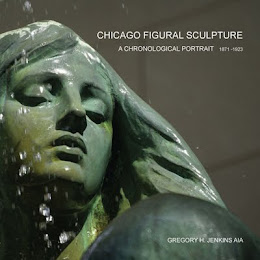For a few brief years, after US the economy finally healed itself from the financial panics of the mid 1890's and before the exuberance of the 1920's translated itself to Deco, Chicago - surely - was Rome on the Lake. Below is the Field Museum: as only Peirce Anderson might have conceived it. The sculpture is the work of Henry Hering - Anderson's collaborator who dates back to the World's Fair.
At D.H. Burnham and Company, Anderson definitely had antecedents. Charles Atwood, showed his "stuff" at the Museum of Science and Industry. Both Museums have become classcial Chicago Icons. (So have their sculptures.) And it is probable that Atwood, too, knew Henry Hering, who assisted Phillip Martiny with the original sculpture that graced his Fine Arts Building (now the MSI).
____________________
FOR MORE CHICAGO SCULPTURE, ARCHITECTURE AND PHOTOGRAPHY VISIT
_________________________







































































































